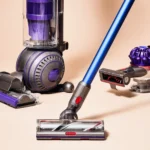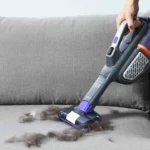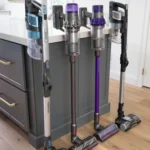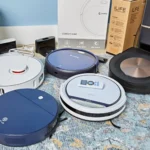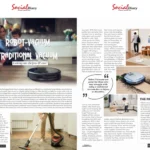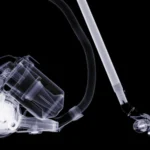Introduction

Have you ever tried cleaning your hardwood floors with a traditional vacuum cleaner only to find it cumbersome and ineffective? Keeping your hardwood floors clean can be a challenging task, but with the right tool, it doesn’t have to be. That’s where handheld vacuum cleaners come in. These compact, lightweight vacuums are designed to be easy to maneuver and get into hard-to-reach spaces, making them perfect for cleaning hardwood floors. In this article, we’ll provide you with tips and tricks for choosing the right handheld vacuum cleaner and using it effectively on hardwood floors.
Why Use Handheld Vacuum Cleaners?
Using a handheld vacuum cleaner can offer several benefits when it comes to cleaning hardwood floors. First and foremost, handheld vacuums are incredibly lightweight, making them easy to move around the room and use for extended periods without causing strain or discomfort. They also come in a variety of sizes and shapes, making them perfect for cleaning tight spaces and awkward corners where larger vacuums may struggle to reach.
Another reason to use a handheld vacuum for hardwood floor cleaning is its portability. Handheld vacuums are cordless and battery-powered or corded and lightweight, which makes them easy to transport from room to room or even between floors of your home without requiring any additional equipment.
Additionally, handheld vacuums are versatile and can be used for a range of cleaning tasks beyond just hardwood floors. With the right attachments, they can be used to clean upholstery, curtains, car interiors, and even pet hair, which is a common allergen that can be tough to remove.
Lastly, handheld vacuums are cost-effective, space-saving, and environmentally friendly compared to traditional vacuum cleaners. They require less storage space, generally have lower power consumption rates, and are perfect for small apartments and spaces. It’s no wonder why handheld vacuum cleaners are becoming increasingly popular among modern homeowners.
Consider buying a handheld vacuum cleaner for your hardwood floors to experience the numerous benefits for yourself. For more information on the topic, check out this handheld vacuum buying guide, which goes into more detail about the different types of handheld vacuums available and what factors to consider when choosing one.
Choosing the Right Handheld Vacuum Cleaner
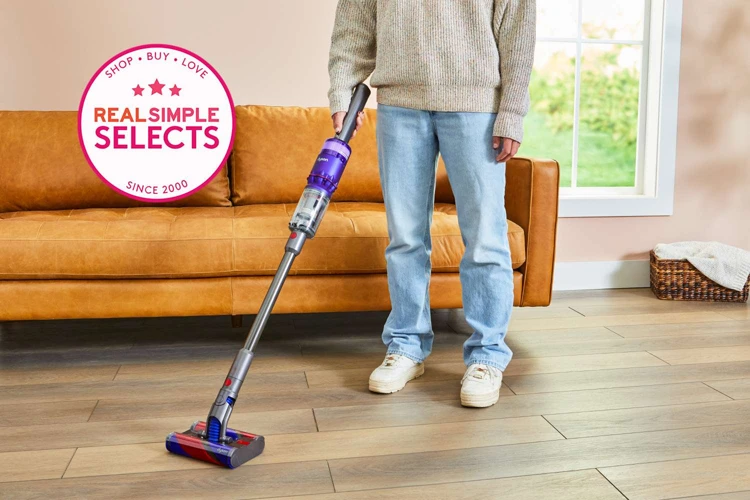
As you start your search for the perfect handheld vacuum cleaner for your hardwood floors, you may feel overwhelmed with the vast array of options available. It can be tough to know where to start and how to identify the features that matter most. However, fear not, as this guide will walk you through the most important factors to consider when choosing a handheld vacuum cleaner that will make cleaning your hardwood floors a breeze. From considering the type of hardwood flooring you have to checking for adjustable suction settings, read on to ensure you make an informed decision. And, if you’re interested in learning more about the benefits of handheld vacuums, check out our article on the top five reasons to use a handheld vacuum cleaner.
Consider the Type of Hardwood Flooring
When choosing a handheld vacuum cleaner for hardwood floors, it is important to consider the type of hardwood flooring you have. Not all hardwood floors are the same, and certain vacuums may be better suited for certain types than others.
Here are some factors to consider:
- Type of Wood: Some hardwood floors are made of soft woods, such as pine or spruce, while others are made of harder woods, such as oak or maple. If your hardwood floors are made of softer woods, you may want to consider a vacuum with a softer brush head to avoid scratching the surface.
- Sealed vs. unsealed: Sealed hardwood floors have a protective coating that helps to prevent scratches and damage. Unsealed hardwood floors do not have this protection and are more prone to damage. If you have unsealed hardwood floors, you may want to consider a vacuum with gentle suction and brush head to avoid damage.
- Thickness: The thickness of your hardwood flooring can also play a role in selecting a vacuum. Some vacuums may have trouble cleaning deeply grooved or uneven surfaces, while others may work best on thin or flat hardwood floors.
It is important to take these factors into consideration when choosing a handheld vacuum cleaner for your hardwood floors. By choosing the right vacuum for your specific flooring, you can ensure that your floors are cleaned effectively without sustaining any damage.
If you are interested in learning more about handheld vacuums, check out our article on the top 10 handheld vacuums for small spaces or our article on the benefits of using a handheld vacuum for cars.
Look for Models with Soft Brush Heads
When looking for handheld vacuum cleaners for hardwood floors, soft brush heads are a must-have feature. Hard brush heads can scratch and damage the surface of the floors, reducing their lifespan and ruining their appearance. It is essential to choose a vacuum cleaner with a soft brush head that is gentle on hardwood flooring.
To find the best handheld vacuum cleaner with a soft brush head, it is important to compare different models and brands. To simplify your search, we’ve compiled a helpful table that compares some of the top-rated handheld vacuum cleaners with soft brush heads:
| Model | Brand | Soft Brush Head | Adjustable Suction |
|---|---|---|---|
| Bissell Pet Hair Eraser | Bissell | Yes | Yes |
| Dyson V11 | Dyson | Yes | Yes |
| Shark Rocket Corded Hand Vac | Shark | Yes | No |
| Hoover ONEPWR Cordless Handheld Vacuum | Hoover | Yes | Yes |
As seen in the table, the Bissell Pet Hair Eraser and Dyson V11 are two handheld vacuum cleaners that come with soft brush heads as well as adjustable suction options, making them a great choice for hardwood flooring. The Shark Rocket Corded Hand Vac, on the other hand, does not have adjustable suction, but it does come with a soft brush head that is safe for hardwood floors. Lastly, the Hoover ONEPWR Cordless Handheld Vacuum is another option that comes with a soft brush head and adjustable suction.
It is important to keep in mind that while a soft brush head is essential for hardwood floors, it is not the only feature to consider when choosing a handheld vacuum cleaner. Be sure to also consider the type of hardwood flooring you have, whether you need a corded or cordless model, and other factors outlined in this guide.
If you want to learn more about handheld vacuum cleaners, you may be interested in our guides on the history of handheld vacuums or how to choose handheld vacuum attachments.
Check for Adjustable Suction Settings
When choosing a handheld vacuum cleaner for your hardwood floors, it is important to look for models with adjustable suction settings. Here are some reasons why:
- Hardwood floors can be easily damaged if too much suction is applied. This is especially true if the vacuum’s head is not equipped with soft bristles or rubberized wheels.
- Adjustable suction settings can also come in handy when you need to clean more delicate surfaces or fabrics, such as upholstery or curtains.
- On the other hand, when dealing with a tough mess, you may want to crank up the power to get rid of stubborn dirt and debris.
In short, having control over the suction power can make your cleaning experience more efficient, effective, and safe for your hardwood floors. When shopping for a handheld vacuum cleaner, be sure to check for models with adjustable suction settings.
Consider Corded vs. Cordless
When it comes to handheld vacuum cleaners for hardwood floors, one of the main considerations is whether to choose a corded or cordless model. Both options have their advantages and disadvantages, and it’s important to weigh these up before making a decision.
CRITERIA CORDLESS CORD
Convenience ✔
Power ✔
Battery Life ✔
Suction Power ✔
Price ✔
Cordless models are generally considered to be more convenient, as they are not restricted by a power cable, and you can move around more easily. They are also easier to store, as you don’t have to worry about winding up a long cable. However, they do have some disadvantages. The battery life can be an issue, as it may not last long enough for a thorough cleaning session. This can be especially frustrating if you have a larger area to clean. Additionally, the suction power may not be as strong as with a corded model, which can limit their performance.
Corded models have the advantage of consistent and powerful suction, which can make them more effective at picking up dirt and debris. They also don’t have the limitation of battery life, so you can clean for as long as you need to without worrying about running out of charge. However, they are less convenient because of the power cord, which can be an obstacle while cleaning. They are also generally more expensive than cordless models.
Ultimately, the choice between a corded or cordless handheld vacuum cleaner for hardwood floors will depend on your specific needs and preferences. If you have a smaller area to clean and value convenience over power, a cordless model may be the best choice for you. However, if you need maximum power and consistency for a larger area, a corded model may be more suitable. It is important to consider all of the factors when making your decision, so that you can choose the best option for your needs.
Read Reviews from Other Hardwood Floor Owners
When choosing a handheld vacuum cleaner for your hardwood floors, it’s important to do your research and read reviews from other hardwood floor owners. Here are some tips on how to evaluate reviews:
1. Look for Overall Satisfaction: Look for reviews that express overall satisfaction with the vacuum cleaner. If a large percentage of the reviews are positive, it’s likely that the vacuum cleaner is a good choice for hardwood floors.
2. Pay Attention to the Number of Reviews: A vacuum cleaner with only a few reviews may not be a good choice as there may not be enough information to make an informed decision. Look for vacuum cleaners with a substantial number of reviews to get a better idea of the product’s overall quality.
3. Check for Consistent Feedback: If several reviews mention similar issues with the vacuum cleaner, it’s important to take note of these. For example, if multiple reviews mention that the vacuum cleaner has difficulty picking up larger debris, you may want to consider a different vacuum cleaner.
4. Evaluate Negative Reviews: Don’t just look at positive reviews; evaluate negative reviews as well. Look for patterns in the negative feedback and consider whether these issues are deal breakers for you.
5. Consider the Source: Take into account who is leaving the reviews. If the reviews are from a reputable source or an individual with expertise in the field, they may hold more weight than reviews from someone with little experience.
By taking the time to read reviews, you can make a more informed decision when choosing a handheld vacuum cleaner for your hardwood floors. It’s important to pay attention to overall satisfaction, the number of reviews, consistent feedback, negative reviews, and the source of the reviews to get a clear picture of the product’s performance.
Using Your Handheld Vacuum Cleaner
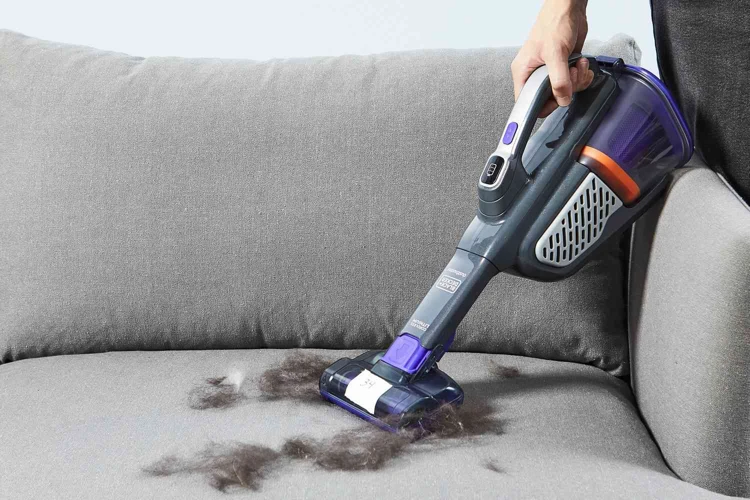
After you have carefully chosen the perfect handheld vacuum cleaner for your hardwood floors, it’s time to put it to use. But how exactly do you make the most out of your new appliance? Don’t worry, using a handheld vacuum cleaner is quite simple, and with the right techniques, you are sure to get the best results possible. In this section, we will delve into some tips and tricks for using your vacuum cleaner like a pro. From removing loose dirt and debris to paying attention to corners and edges, we’ll cover it all. So, sit back, grab your vacuum cleaner, and let’s get to work!
Remove Loose Dirt and Debris
When it comes to cleaning hardwood floors with a handheld vacuum cleaner, the first step is to remove any loose dirt and debris. This will ensure that the surface is free of larger particles that could potentially scratch or damage the wood. Here are some tips for effective removal:
- Start with a broom: Before using your handheld vacuum cleaner, it can be helpful to sweep the floor with a broom to gather any large particles into a pile.
- Use the crevice tool: Attach the crevice tool to your handheld vacuum and use it to reach tight spaces and corners where dirt may have accumulated.
- Pay attention to baseboards: Dust and dirt often gather along baseboards, so be sure to use the crevice tool or the dusting brush attachment to remove it.
- Go against the grain: When vacuuming hardwood floors, it is best to go against the natural grain of the wood to ensure that all dirt and debris is removed.
- Take your time: It’s important to take your time when vacuuming hardwood floors, especially if there is a lot of debris to remove. Rushing the process can result in debris being pushed around rather than being effectively removed.
By following these tips, you can ensure that your hardwood floors are thoroughly cleaned and free of debris. Additionally, removing loose dirt and debris regularly can help to extend the life of your floors and prevent damage over time.
Pay Attention to Corners and Edges
When it comes to cleaning hardwood floors, paying attention to corners and edges is crucial to ensure a thorough and effective clean. These areas tend to accumulate more dirt and debris, and regular sweeping or mopping may not always reach these spots. That’s where your handheld vacuum cleaner comes in handy.
To effectively clean corners and edges, follow these tips:
| Tip | Description |
|---|---|
| Use the Crevice Tool Attachment | The crevice tool is a long, narrow attachment that fits into tight spaces such as corners and edges. Attach it to your handheld vacuum cleaner and use it to suck up dirt and debris that has accumulated in these areas. |
| Use a Soft Brush Attachment | For more delicate or intricate hardwood floors, use a soft brush attachment to gently sweep away dirt and debris from corners and edges without scratching the surface. Make sure the brush attachment is compatible with your handheld vacuum cleaner to ensure optimal performance. |
| Angle the Vacuum | To get the most out of your handheld vacuum cleaner, make sure to angle the vacuum head towards the corners and edges. This will help ensure that the suction power is directed towards the areas that need it most, picking up as much dirt and debris as possible. |
| Move Furniture if Necessary | Oftentimes, dirt and debris accumulates in corners and edges near furniture or other objects. If possible, move furniture out of the way to give your handheld vacuum cleaner full access to these areas. This will help you achieve a more thorough and effective clean. |
By following these tips, you can ensure that your handheld vacuum cleaner effectively cleans corners and edges, which are often overlooked during routine cleaning. Remember to use the right attachments, angle the vacuum head, and move furniture if necessary to achieve the best results.
Use the Right Attachments for the Job
One of the key factors in effectively cleaning hardwood floors with a handheld vacuum cleaner is using the right attachments. Here are some of the most commonly used attachments and the situations where they come in handy:
- Ceiling Fan Brush: If you have ceiling fans in the room with hardwood floors, you will want to use this attachment to remove dust and debris that gathers on the fan blades. This will prevent the dirt from dispersing throughout the room when the fan is turned on.
- Crevices Tool: This attachment is perfect for cleaning the edges and corners of your hardwood floors where dust and hair can accumulate. Because it has a narrow shape, it can get into tight spaces and remove dirt easily.
- Upholstery Tool: This attachment can be used to clean upholstered furniture in the same room as your hardwood floors. Small crumbs, dirt, and dust can accumulate on upholstery, and this tool can easily remove them.
- Dusting Brush: A dusting brush can be a great tool for gently removing dust from surfaces like baseboards or walls near your hardwood floors that gather dust over time.
- Bare Floor Tool: A bare floor tool is a large, flat attachment that is specifically designed for cleaning hardwood floors. It can easily glide over your floor and pick up dirt and debris without scratching the surface.
Using the right attachment for the job can make all the difference in the effectiveness of your cleaning routine. Take the time to learn which attachments work best for each surface and keep them easily accessible for quick and efficient cleaning.
Empty the Dustbin Regularly
Regularly emptying the dustbin of your handheld vacuum cleaner is essential to ensure optimal performance and prevent clogs. The frequency at which you should empty the dustbin depends on the amount of debris and dirt you collect. However, it is recommended to empty it after every use, particularly if you have been vacuuming a large area or a particularly dirty surface.
Why is it important to empty the dustbin regularly?
The dustbin is where all the debris and dirt collected by the vacuum cleaner are stored. When the dustbin is full, it can affect the suction power of your vacuum cleaner, making it less effective at picking up dirt and debris. When the dustbin is not emptied regularly, it can lead to clogs as the debris accumulates and gets stuck in the vacuum’s hose and filter.
To avoid these problems, you should empty the dustbin regularly, particularly if you have pets or live in an area with high dust and debris.
How to empty the dustbin of your handheld vacuum cleaner?
The process for emptying the dustbin will vary depending on the model of your vacuum cleaner. However, here are some general steps you can follow:
- Locate the dustbin on your vacuum cleaner.
- Remove the dustbin from the vacuum cleaner by pressing the release button or lever.
- Hold the dustbin over a garbage bin, then press the release button or lever to open the bottom of the dustbin
- Shake the dustbin gently to remove any remaining debris or dirt.
- Wipe the dustbin with a damp cloth or rinse it with water if necessary.
- Allow the dustbin to dry completely before reattaching it to the vacuum cleaner.
What to do if the dustbin is not detachable?
If the dustbin of your handheld vacuum cleaner is not detachable, you may need to remove the dustbin and empty it using a small brush or by turning the vacuum cleaner upside down over a garbage bin. Alternatively, you can use a vacuum cleaner with a disposable bag to make disposing of the debris easier and less messy.
By taking the time to regularly empty your handheld vacuum cleaner’s dustbin, you’ll ensure that it continues to operate efficiently and effectively, allowing you to keep your hardwood floors looking their best.
Clean or Replace Filters as Needed
When it comes to maintaining the performance of your handheld vacuum cleaner for hardwood floors, cleaning or replacing the filters is crucial. Over time, the filters in your vacuum can become clogged with dirt and debris, which can reduce suction power and make it harder for the vacuum to pick up larger particles.
To avoid these issues, it’s important to clean or replace the filters as needed. Here are some tips to help you keep your handheld vacuum’s filters in top condition:
- Check Your Vacuum’s User Manual: Before cleaning or replacing your vacuum’s filters, it’s a good idea to consult the user manual. This will give you specific instructions for your model of vacuum, including whether or not the filters are washable or need to be replaced entirely.
- Remove and Inspect the Filters: To begin the cleaning process, turn off your vacuum and remove the filters. Inspect them for any signs of damage or wear, such as tears or holes.
- Clean Washable Filters: If your vacuum’s filter is washable, rinse it under cold water and gently rub any stubborn dirt or debris with your hands. Allow the filter to air dry completely before replacing it in the vacuum.
- Replace Non-Washable Filters: If your vacuum’s filter is not washable, you’ll need to replace it entirely. Check with the manufacturer or a local appliance repair shop to find the right replacement filters for your particular model of vacuum.
- Check Filters Regularly: To keep your vacuum running smoothly, it’s important to check the filters regularly and clean or replace them as needed. How often you need to do this will depend on how often you use the vacuum and the types of debris you’re vacuuming up.
By taking the time to clean or replace your handheld vacuum’s filters, you can help ensure that it continues to work effectively and efficiently, even over time. So be sure to add this important step to your cleaning routine and enjoy a cleaner, healthier home.
Troubleshooting Common Issues
Running into issues while using your handheld vacuum cleaner for hardwood floors can be a frustrating experience. It’s important to know how to troubleshoot common problems so you can continue to maintain a clean and debris-free floor. Here are some helpful tips to help resolve any perplexing issues you may encounter while using your handheld vacuum cleaner.
Inadequate Suction
One of the most frustrating problems that you might encounter while using your handheld vacuum cleaner on your hardwood floors is inadequate suction. If you are struggling with this issue, don’t worry. There are several things you should try before giving up on your vacuum cleaner completely.
First, check to make sure that the vacuum cleaner’s dustbin is not full. If it is, empty it out and see if the suction improves. It’s also worth checking to see if the filter needs to be cleaned or replaced.
If the dustbin and filter are not the problem, try adjusting the suction settings on your vacuum cleaner. Many handheld vacuums have adjustable suction settings, which can help you tailor the strength of the suction to the specific needs of your hardwood floors.
If adjusting the suction settings still doesn’t help, check the condition of the brush head. Some brush heads can become clogged with debris over time, which can impact the suction. If this is the case, try cleaning the brush head or replacing it with a new one.
Lastly, it’s important to note that some handheld vacuum cleaners may simply not be powerful enough to provide adequate suction for hardwood floors. If you’ve exhausted all other options and are still struggling with inadequate suction, it may be time to consider upgrading to a more powerful model.
Here’s a quick summary of possible solutions for inadequate suction:
| Possible Cause of Inadequate Suction | Possible Solution |
|---|---|
| Dustbin is full | Empty the dustbin |
| Filter needs cleaning or replacement | Clean or replace the filter |
| Suction settings are too low | Adjust the suction settings |
| Brush head is clogged or damaged | Clean or replace the brush head |
| Vacuum cleaner is not powerful enough | Consider upgrading to a more powerful model |
By following these tips and troubleshooting techniques, you should be able to address the problem of inadequate suction and get your handheld vacuum cleaner working effectively on your hardwood floors once again.
Difficulty Maneuvering the Vacuum
One common issue that many people face when using handheld vacuum cleaners for hardwood floors is difficulty maneuvering the vacuum. This can be frustrating, but the good news is that there are a few tips and tricks you can use to make the process easier.
1. Start with the Right Vacuum: First and foremost, make sure you have the right vacuum for your needs. If your vacuum is too heavy or bulky, it can be difficult to maneuver around furniture and other obstacles. Look for a vacuum that is lightweight and easy to handle so you can easily navigate around your hardwood floors.
2. Use the Right Attachments: Another key to maneuvering your vacuum effectively is to use the right attachments. Many handheld vacuums come with a variety of attachments, such as crevice tools and brush heads. By using the right attachment for the job, you can more easily clean tight corners, edges, and other hard-to-reach areas.
3. Practice Your Technique: Sometimes, simply practicing your technique can help you maneuver your vacuum more effectively. For example, if you’re having trouble getting the vacuum to glide smoothly across the floor, try adjusting the angle at which you hold the vacuum. By experimenting with different techniques, you can find the method that works best for you.
4. Clear the Area: One of the most common reasons why people have difficulty maneuvering their vacuum is because there are too many obstacles in the way. Before you start vacuuming, take a few moments to clear the area of any furniture or other objects that could get in your way. This will make it much easier to move the vacuum around without bumping into things.
5. Take Breaks: Finally, if you find that you’re struggling to maneuver your vacuum, don’t be afraid to take breaks. Vacuuming can be a physically demanding task, especially if you have a large space to clean. By taking breaks and giving yourself a chance to rest, you can come back to the task with renewed energy and focus.
By following these tips and tricks, you should be able to more easily maneuver your handheld vacuum cleaner on your hardwood floors. Remember, practice makes perfect, so don’t get discouraged if it takes a little time to get the hang of it.
Dustbin Overflows or Clogs
One of the most frustrating issues that can arise when using a handheld vacuum cleaner is when the dustbin overflows or clogs. This can happen if the vacuum cleaner is not emptied or cleaned frequently enough, or if there is a blockage somewhere in the vacuuming system.
Fortunately, there are some steps you can take to prevent these issues from occurring:
| Step | Description |
|---|---|
| Step 1: Empty the Dustbin Frequently | Make sure to empty the dustbin before it becomes too full. Depending on the size of the dustbin and how much debris you are vacuuming, this may mean emptying it after each use, or it may mean emptying it every few uses. If the dustbin is too full, it may cause loss of suction power, or even cause the vacuum cleaner to stop working altogether. |
| Step 2: Clean the Dustbin and Filter | When you empty the dustbin, take the time to clean it out thoroughly to remove any debris that may be stuck inside. This will also help prevent the filter from becoming clogged. Depending on the type of filter your vacuum cleaner uses, you may need to clean or replace it on a regular basis. |
| Step 3: Check for Blockages | If you notice that the suction power of your vacuum cleaner has decreased or if the dustbin is not filling up as quickly as it should be, there may be a blockage somewhere in the vacuuming system. Check the hose, brush head, and any other attachments for any clogs or obstructions. If you find a blockage, remove it carefully so as not to damage the vacuum cleaner. |
By following these simple steps, you can keep your handheld vacuum cleaner in good working order and prevent issues with dustbin overflows or clogs. Remember to empty the dustbin frequently, clean the dustbin and filter, and check for blockages to ensure optimal performance.
Brush Head Not Working Properly
If you find that the brush head on your handheld vacuum cleaner for hardwood floors is not working properly, there are a few things you can check to resolve the issue:
- Check for Blockages: First, make sure there are no blockages in the brush head itself. Sometimes hair or debris can get tangled in the brush, preventing it from spinning properly. Turn off the vacuum and use a pair of scissors or tweezers to carefully remove any blockages.
- Clean the Brush: If there are no blockages, the brush head may be dirty. Remove the brush head from the vacuum and use a soft-bristled brush to gently clean the bristles. Make sure to remove any hair or debris that may be caught in between the bristles.
- Check the Belt: If the brush head still doesn’t spin properly, it may be an issue with the belt. Consult your vacuum’s user manual to learn how to check the belt and replace it if necessary.
- Replace the Brush Head: If all else fails, you may need to replace the brush head entirely. Make sure to purchase a brush head that is compatible with your specific vacuum model.
It’s important to keep in mind that the brush head is a crucial component of your handheld vacuum cleaner for hardwood floors. If it’s not working properly, your cleaning efforts may be compromised. By following these tips, you can troubleshoot and resolve issues with your brush head to ensure that your vacuum is working at its best.
Conclusion
After considering the different factors and tips for choosing and using a handheld vacuum cleaner for hardwood floors, you should now have a good idea of what to look for when shopping for one. Always consider the type of hardwood flooring you have, as well as the different suction settings and attachments that can make cleaning more effective.
It is also important to pay attention to the maintenance needs of your vacuum cleaner, regularly emptying the dustbin and cleaning or replacing filters as needed. Troubleshooting common issues such as inadequate suction or a malfunctioning brush head can help you prolong the life of your vacuum.
By investing in a quality handheld vacuum cleaner, you can make the task of cleaning hardwood floors much more manageable and efficient. Not only will this save you time and effort, but it can also help protect the longevity of your flooring. So go ahead and put these tips and tricks into practice, and enjoy a cleaner home and floors!
Frequently Asked Questions
1. Can I use a regular vacuum cleaner on my hardwood floors?
Yes, but the suction and brush heads on regular vacuums can scratch and damage hardwood floors. It is best to use a handheld vacuum cleaner specifically designed for hardwood floors.
2. Corded or cordless handheld vacuum cleaner: Which is better for hardwood floors?
Both options have their pros and cons. Corded models generally have stronger suction and are better for larger messes, while cordless models offer more flexibility and are better for quick cleanups.
3. Are there specific attachments I should use for hardwood floors?
Yes, look for attachments such as a soft bristle brush head, crevice tool, and dusting brush that are designed for hardwood floors.
4. How often should I empty the dustbin on my handheld vacuum cleaner?
It is best to empty the dustbin after every use to maintain peak performance and prevent clogs or overflowing.
5. Can I use my handheld vacuum cleaner on other surfaces besides hardwood floors?
Yes, most handheld vacuum cleaners come with various attachments that can be used on carpet, upholstery, and other surfaces.
6. What should I do if my handheld vacuum cleaner’s suction is weak?
Check to make sure the dustbin and filters are clean, and adjust the suction settings if possible. If the issue persists, it may be time to replace the filters.
7. How do I clean the filters on my handheld vacuum cleaner?
Refer to the manufacturer’s instructions, but most filters can be cleaned with water and mild detergent, and should be allowed to fully dry before using again.
8. Can I use my handheld vacuum cleaner without a brush head?
It is not recommended to use the vacuum without a brush head, as the bristles help to loosen and remove dirt and debris from hardwood floors.
9. How do I clean corners and edges with my handheld vacuum cleaner?
Use the crevice tool attachment to clean corners and edges, and make sure to pay extra attention to these areas as they often collect more dirt and debris.
10. Can I replace the brush head on my handheld vacuum cleaner if it becomes damaged?
Refer to the manufacturer’s instructions, but many handheld vacuum cleaners allow for easy replacement of brush heads if they become damaged or worn out.

